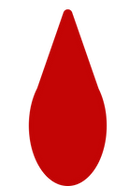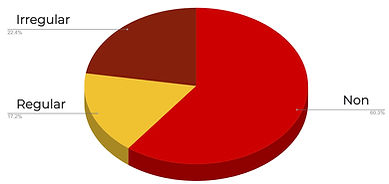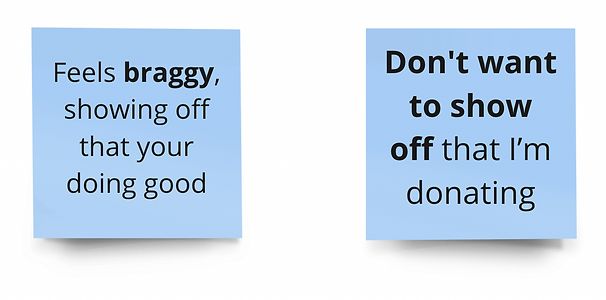
LIFEBLOOD
UX Design to encourage collective altruism to motivate the irregular blood donor, to regular

The Diamond Diamond

2-week sprint

Figma, Miro, Slack, Zoom, Google Suite
MY ROLE
As a team, we collaborated throughout the design process but I played a larger role in the first diamond by bringing my experience in research to the project. I also took the role to communicate on behalf of the team for our standups each day. For every hurdle we came to I would take minutes and ask the whys and hows to help the team understand how we could move forward best.
THE PROBLEM
Lifeblood needs help to understand and solve their digital experience to encourage irregular donors to become regular donors.
THE CHALLENGE
Australia Lifeblood facilitates the collection and distribution of blood and biological products in Australia. Lifeblood faces the challenge of getting enough donations to meet demand. Over the last few years we have all dealt with challenges of Covid and Lifeblood was no different. Prior to Covid, they had 43% of first-time donors never come back. During and post covid times they have been finding even fewer people are donating and with a stunning 1 in 5 bookings cancelled due to a “social hangover” from Covid. That’s where we came in to find a solution to Lifebloods issue.
THE SOLUTION
Our solution is a function within the existing Lifeblood mobile app that is aimed to motivate donors through collective altruism to become more regular donors. See my Final Solution below for more details.
THE RESEARCH

DESK
GLOBAL

DESK
NATIONAL

INTERVIEWS

CONTEXTUAL ENQUIRIES

SURVEYS

COMPARITIVE ANALYSIS

COMPETITIVE ANALYSIS
RESEARCH GOALS
1 | What are the constraints for donating blood?
2 | Understand the donor flow and where there are friction points in this process.
3 | Study donations (eg food, clothes) not just blood and grasp how people donate in general.
WHY THESE GOALS?
1 | We needed to understand the constraints of donating blood to ensure we design a solution that was effective and most importantly functional. This included researching what had failed in the past (and why), and how countries across the world approach donation (and why).
2 | Understanding the user flow for donating blood would help highlight friction points for donors. We knew what Lifeblood felt the reason was for the donation number dropping but we needed to see it from the users perspective and find a solution for both Lifeblood and the donors.
3 | We needed to get a thorough understanding of donation habits and behaviours, in general, to help give us a more in-depth understanding of who they are, why they donate, when, how and mainly what’s stopping them from donating more often.
WHAT THE RESEARCH FOUND

1 | Research was completed with nearly 60 individuals from different backgrounds of donation habits
2 | We gathered over 350 insights for affinity mapping
3 | 82% of blood donors and 85% of plasma donors reported that they donated to “do the right thing” (Glynn et al., 2001)
4 | (Piliavin and Callero, 1991) said that developing an altruistic identity is essential for practising regular blood donation
PRIMARY INSIGHT
HOW I GET REMINDED TO DONATE AGAIN?

SECONDARY INSIGHT
I DON'T SPREAD THE WORD

There’s an interesting paradox we found where people care about getting the word out about donating, but they also don’t want to be boastful about their charity because that suggests that their motives are insincere.
Breaking the silence around when one donates blood is vital for Bloodlife to drive and encourage people to become regular donors, and we found this went hand in hand with the primary insight.
Synthesising of the research led us to our archetypes
DONOR ARCHETYPES

The Regular
donor

The Irregular
donor

The None donor
Jessica the irregular blood donor encompasses a person who has a social nature and tends to be influenced and motivated by her circle. She holds the challenges, behaviours, and motives we found most important to try and solve. As the business goal outlines, irregular donors have a lower barrier to entry than recruiting new donors.
THE PROBLEM STATEMENT
Jessica needs to create a habit of regularly donating blood so that she can help people in need.
 |  |  |
|---|---|---|
 |  |  |
 |  |
FINAL SOLUTION
Our design is to utilise gamification to encourage a habit of regularly donating blood. The design is a team relay for one’s close circle to participate in sequential order of donating where social pressures to donate will over time hopefully create a habit of being a regular donor.
Our design consists of 4 onboarding pages (where the relay concept is outlined) and a team dashboard page. The onboarding has an element where you can set the number of rounds of the relay you would like your team to complete. The importance of this is so to encourage teams to keep the relay race ongoing so as to create a habit.
The team dashboard allows for 3–5 members. This is to allow for the compulsory wait time between donations and not long of a wait until your next donation. On the team dashboard, there is an altering graphic of who’s turn it is as well as the sequence of when each team member's turn is. Each member has one week to complete a blood donation. When it isn’t your turn you can send a digital nudge to the member whose turn it is to help remind them to donate so that the relay race can continue.
